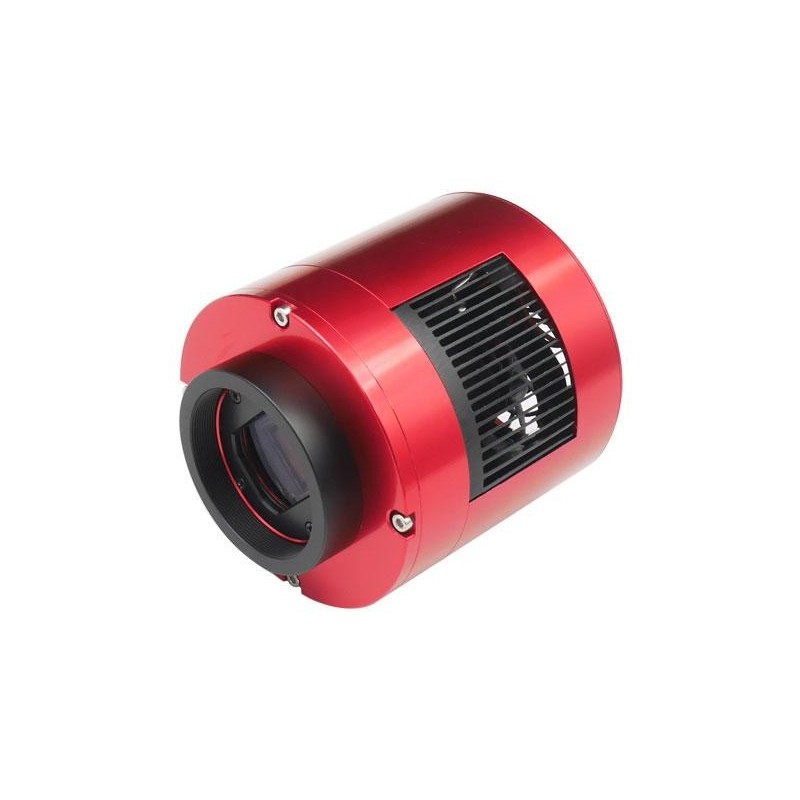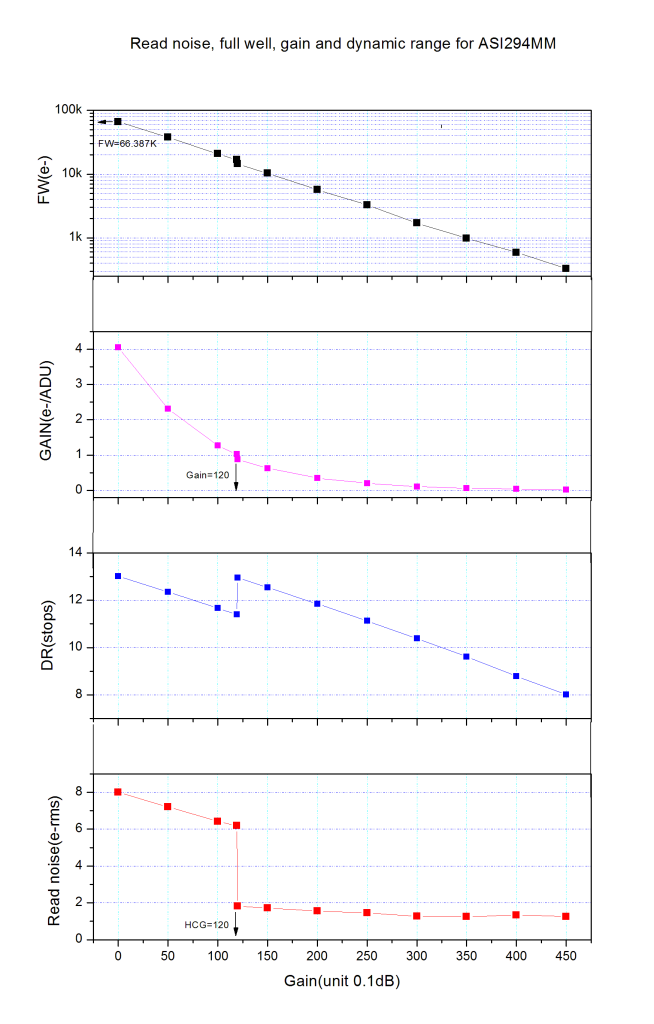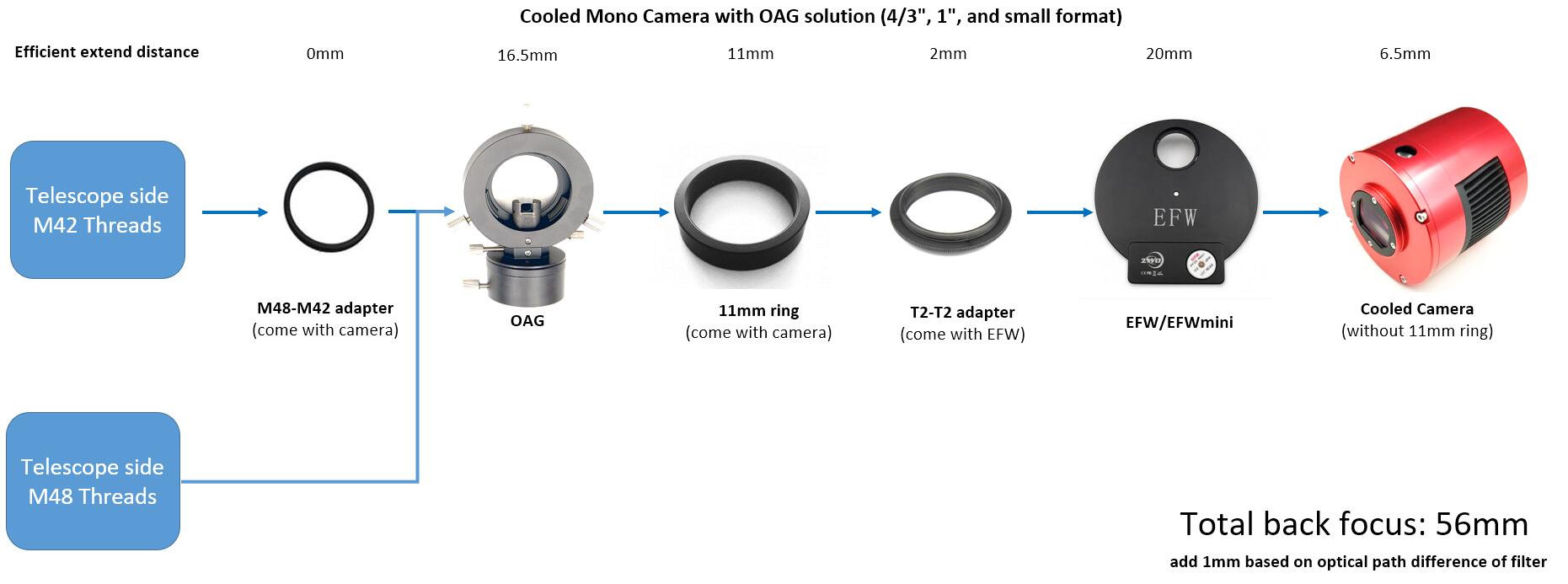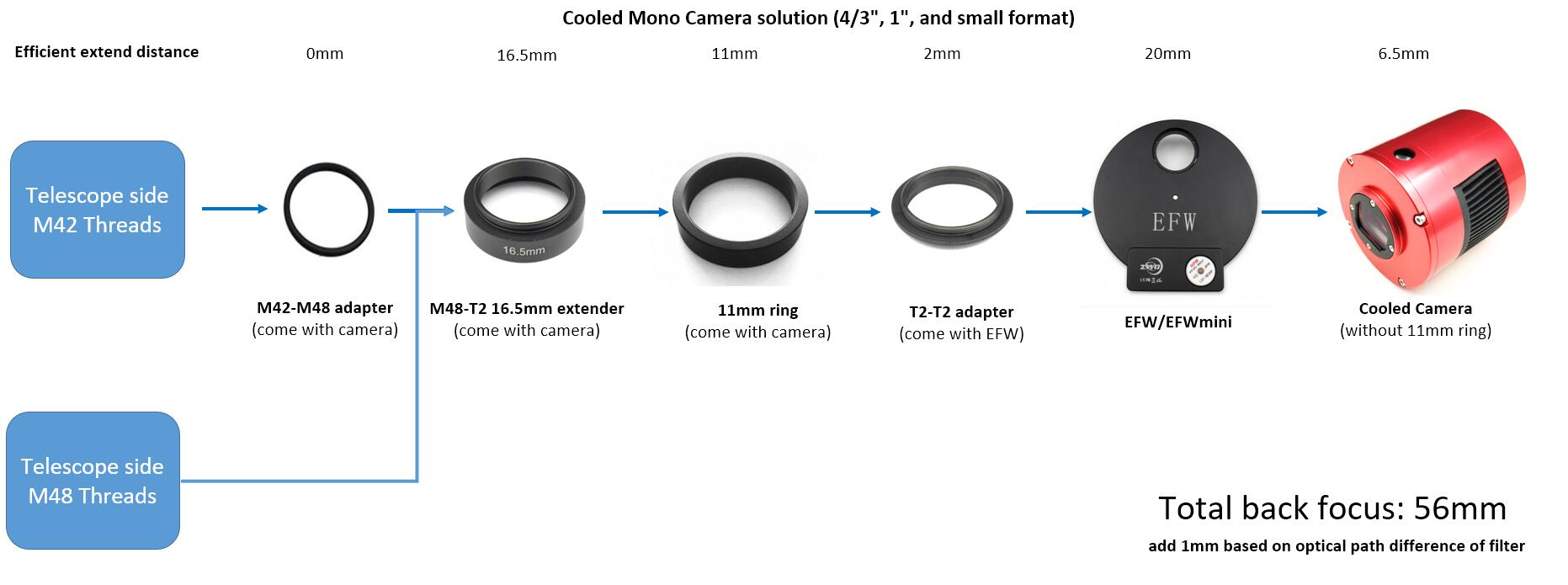
Reference: ZWEAF-N
Brand: ZWO
Reference: ZWEAF-N
Brand: ZWO
Reference: POA-URANUS-C
Brand: Player One
Reference: POA-ACS
Brand: Player One
Reference: AS-FRA400
Brand: ASKAR - Sharpstar
Reference: ZWASI120MINI
Brand: ZWO
Reference: AS-SET-DUO-D1D2
Brand: ASKAR - Sharpstar
Reference: ZWDC-Y-SPLIT
Brand: ZWO
Reference: AS-REDFRA400
Brand: ASKAR - Sharpstar
Banner





ZWO stands out from other manufacturers by its ability to offer a complete range of cameras. Discover here a specific camera for deep sky, cooled and ultra sensitive in monochrome for lovers of LRGB and SHO.
 security
security
100% Secure Payment
 Delivery policy
Delivery policy
Express shipping of in-stock parts
 RETURN POLICY
RETURN POLICY
Express shipping of in-stock parts
ASI cameras have a very good finish with modern CMOS sensors. This camera uses Sony's state-of-the-art "back-illuminated" sensor.
Sony gives a sensor diagonal of 21.63 mm. However, measurements made by ZWO showed a true diagonal of 23.2 mm. The 4.3 µm pixels of the ASI294MM make this camera a versatile device with maximum sensitivity for short exposure times.
The ASI294MM convinces with a much higher light sensitivity, a smoother image and more depth. The stars saturate more slowly.
This monochrome version will allow you to make beautiful SHO images, which you can hardly do with its color counterpart.

ZWO provides you with a set of rings allowing you to reach a Backfocus of 55 mm easily. This backfocus is often used in astronomy with a wide range of correctors and is a distance to respect if you want round stars. Of course this distance must be checked according to the correctors because it is not always 55mm.


Data sheet
No customer reviews for the moment.
Reference: ZWASI2400MC-P
Brand: ZWO
Reference: C1P-5000AMono
Brand: Moravian
Reference: C1P-EFW-7000AM48
Brand: Moravian
Reference: ZWASI533MM-P
Brand: ZWO
Reference: POA-ARES-M-PRO
Brand: Player One
Reference: C1P-12000ACouleur
Brand: Moravian
Reference: C1P-EFW-3000AM48
Brand: Moravian
Reference: POA-URANUS-M-PRO
Brand: Player One
Reference: ZWASI2600MM-P
Brand: ZWO
Reference: POA-POSEIDON-C-PRO
Brand: Player One
Reference: POA-ARTEMIS-M-PRO
Brand: Player One
Reference: ZWASI183MM-P
Brand: ZWO
Reference: POA-POSEIDON-M-PRO
Brand: Player One
Reference: POA-URANUS-C-PRO
Brand: Player One
Reference: C1P-3000ACouleur
Brand: Moravian
Reference: C1P-EFW-12000AM48
Brand: Moravian
Reference: ZWASI120MINI
Brand: ZWO
Reference: ZWOAG
Brand: ZWO
Reference: ZWEFW_8x1.25
Brand: ZWO
Reference: ZWHEATER
Brand: ZWO
Reference: AS-M54OAG
Brand: ASKAR - Sharpstar

ZWO stands out from other manufacturers by its ability to offer a complete range of cameras. Discover here a specific camera for deep sky, cooled and ultra sensitive in monochrome for lovers of LRGB and SHO.
check_circle
check_circle